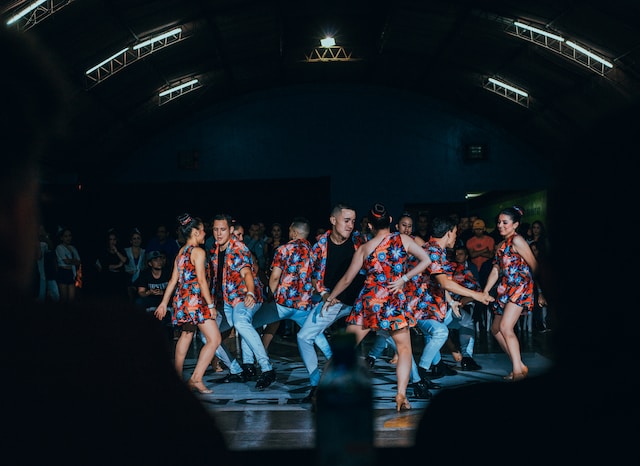What Type of Dancing Burns the Most Calories?

This page shows what type of dancing burns the most calories – and what are the key factors that your individual calorie burn rate will depend on.
There is one form of fitness which deliberately combines dancing and cardiovascular exercise. This is Zumba. It was deliberately designed to include warmups, and to cover the needs of individuals will a wide range of fitness needs.
Of course, more traditional (and more fun) types of dancing will also burn through those calories. Popular dance formats which may surprise you in their burn rates include ballet, salsa, and swing.
Before you get your dancing shoes on, here are the types of dancing ranked for calorie burn:
Dancing and Calorie Burn Rates:
- Zumba: Combining cardio with dance gets though 500 to 800 calories per hour.
- Hip-Hop: Intensity of your movements is the key here, with 400 to 600 calories / hour possible.
- Salsa: Working with a partner helps with burn rates of 300 to 500 calories / hour.
- Ballet: This dance style is surprisingly intensive, burning 300 to 450 calories / hour.
- Swing: Burn rates are determined by the tempo, with 200 to 300 calories / hour typical.
- Tango: Controlled movements mean muscles work hard, with 200 to 300 calories / hour possible.
- Contemporary: Harder to estimate due to intensity variations, benchmark of 150 to 300 calories / hour.
- Bollywood: Growing in popularity, this fun dance format burns 150 to 250 calories / hour.
- Tap: Speed and complexity burn through those calories, 150 to 250 per hour is possible.
- Flamenco: Footwork and expressive arm movements make 100 to 200 calorie / hour burn rates possible.

What Factors Affect Your Individual Calorie Burn Rates While Dancing?
While we can estimate the calorie burns for dance styles based on average scores – the exact number of calories you burn will depend on multiple individual factors.
Your size, body composition and current fitness level all come into play.
Larger people will burn more calories, as moving extra mass requires more energy. That said, if your mass is made up of extra fat, you’d burn less calories than someone of the same weight with more muscle tissue – as muscle is more metabolically active.
Your metabolic rate is a big factor in how many calories you’d burn while dancing. This is higher for fit people, gets slower as you age, and is affected by sex and genetic differences. Hormones can also affect your basal metabolic rate.
Finally, how much vigour and intensity you put into your dance will make a big difference to your dancing calorie expenditure. It can double it in some examples.

Zumba: Dancing Designed for Fitness and Calorie Burning
Zumba has a long track record of using dance to burn calories and boost cardiovascular fitness.
It was created in the 1990’s by Alberto Perez, known as ‘Beto’. Classes now take place around the world and are led by certified instructors.
The dance styles used have a Latin American format – but also take inspiration from formats used around the world. You will recognise elements of salsa, merengue, samba, and others. Music used includes Latin, hip-hop and pop / contemporary tunes.
Classes start with a warmup, and then involve continual dancing which ranges in intensity. As well as a cardio workout, muscle toning and strengthening benefits occur. A cool down after the workout helps with recovery.
A big part of the popularity of Zumba is that it works for people of all fitness levels. It is more accessible (and more fun) than simply joining a gym or running on a home treadmill.
More Popular Fitness Guides this Month:
- Negative Calorie Food (a myth?)
- Fitness Benefits of Owning a Dog
- What Causes Sugar Cravings and How to Deal With Them
- Five Most Painful Sporting Injuries
- Recovery Runs 101